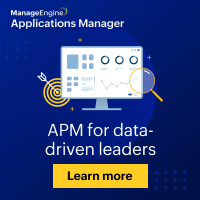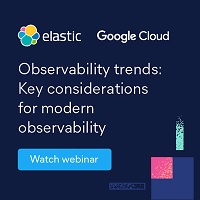The Holiday Season means it is time for APMdigest's annual list of predictions, covering IT performance topics. Industry experts — from analysts and consultants to the top vendors — offer thoughtful, insightful, and often controversial predictions on how Observability, APM, AIOps and related technologies will evolve and impact business in 2025.
APMdigest covers a variety of related technologies related to IT performance, and this year's predictions series offers an equally broad scope of topics. In addition to Observability and APM, the related technologies covered include AIOps, OpenTelemetry, DEX and User Experience Management, NetOps and Network Performance Management (NPM) and more.
Some of these predictions may come true in the next 12 months, while others may be just as valid but take several years to be realized. Still others may be wishful thinking or unbased fears. But taken collectively, this list of predictions offers a timely and detailed snapshot of what the IT industry and the Observability market is thinking about and planning, expecting and hoping for 2025.
The predictions will be posted over the next two weeks, with separate lists of predictions for Cloud, DataOps and GenAI to follow after the holidays. Meanwhile, DEVOPSdigest is posting a series of DevOps and development-related predictions for 2025, starting with predictions about AI in software development.
A forecast by the top minds in Observability today, here are the predictions:
APPLICATION PERFORMANCE IS STRATEGIC ENABLER
With user expectations at an all-time high, application performance will be viewed as a strategic enabler for digital initiatives bridging the gap between IT operations and business outcomes. Observability is no longer a capability for elite IT teams, it's become a household ingredient in IT. Its shift from being a niche capability to a must-have for modern IT and DevOps teams is already afoot, and is expected to only accelerate further in 2025, driven by the increasing complexity of distributed systems and hybrid cloud architectures.
Arun Balachandran
Sr. Marketing Manager - Applications Manager, ManageEngine

FULL-STACK OBSERVABILITY REPLACES MONITORING
Monitoring solutions will be replaced by AI-powered, full-stack observability solutions. Businesses face global challenges, competitive pressures, a tricky economy and rising customer expectations. In 2025, we'll see that as the evolving systems that power today's businesses grow, so, too, does their complexity, with applications, networks, and data more entwined than ever. This begs the question — how can you know how everything is performing, everywhere, all at once? You need to move from monitoring, which tells you when something is wrong, while observability can tell you what's happening, why it's happening and how to fix it. In 2025, we'll see organizations turn to AI-powered, full-stack observability for what I'm calling a "zen-like IT state of mind" — to minimize IT complexity. The true potential of observability is seen through a deep understanding of the relationship between all the infrastructure components (systems, workloads, networks and infrastructure), performance of applications, and quick-turnaround issue resolution
Madhu Kochar
VP, Product Development, IBM Automation at IBM
Observability Automation
Automating observability processes aims to expedite root cause analysis. Currently, sifting through vast data sets to find the root cause of issues is complex and time-consuming. By utilizing AI-driven automation, observability better guides users through debugging steps, reduces the likelihood of human error, and delivers insights faster. As automation capabilities expand, the industry anticipates significant reductions in mean time to resolution, transforming the user experience and operational efficiency.
Sam Suthar
Founding Director, Middleware
Perspective-Based Observability
Observability will evolve from a singular view to a multidimensional approach. Teams will analyze workloads through lenses such as uptime, performance, cost, security, and compliance. This blended perspective will help organizations make better decisions by understanding how different metrics and priorities interact within their environments.
Andreas Prins
VP of Product Marketing, SUSE
Architecture insights
Architecture insights will become essential for modern observability. As applications grow more complex, traditional approaches to observability must expand to address architectural challenges that are often the root cause of many performance and scalability issues. While today's solutions excel at performance monitoring and outage detection, standard observability must evolve to help teams better understand how architectural decisions and patterns impact system reliability and performance.
Architectural observability will emerge as the next value layer in the observability market, complementing existing strengths in APM observability tools. Providing teams with a way to visualize architecture, identify architectural drift and complexity will help them reduce mean time to resolution (MTTR) and better maintain application resilience and scale. Particularly with microservices, which are highly likely to experience sprawl as AI becomes more sophisticated in writing code, architectural observability will be essential for maintaining real-time application visibility, identifying issues, and supporting a strong foundation for development.
Moti Rafalin
CEO and Co-Founder, vFunction
Observability Stack Breaks Apart
2025 will be the year observability stacks break apart. Observability stacks are likely to become more disaggregated as companies move away from monolithic, all-in-one solutions to specialized, best-of-breed tools. As data volumes and complexity grow, teams will demand more flexibility in how they monitor and manage their infrastructure. This shift will result in observability stacks breaking into distinct layers — such as metrics, logs, traces, and events — each optimized with dedicated solutions. Disaggregation will enable more tailored observability strategies, greater scalability, and cost efficiency, as businesses can choose the most effective tools for specific parts of their systems rather than relying on a single, unified platform.
Kishore Gopalakrishna
Cofounder and CEO, StarTree
The Great Observability Shakeout
Incumbent vendors have built their offerings on a mish-mash of proprietary agents, proprietary databases and query languages. The result? As Data volumes have sky-rocketed so too have their bills and — worse — their customers are locked in. OpenTelemetry, Object Stores (such as AWS S3) and Apache Iceberg have provided a new breed of vendors with a standard, low cost, way to collect and store data. These products are based on a completely new architecture built on open standards and priced in a way that doesn't result in the usual overage bill each month. Legacy vendors will inevitably try to make it difficult for customers to switch, but those barriers will fall. Customers should plan now for the coming migration opportunities.
Jeremy Burton
CEO, Observe
COST-EFFECTIVE OBSERVABILITY
Economic factors may push enterprises to prioritize cost-effective observability solutions, emphasizing value and efficiency over premium features.
Arun Balachandran
Sr. Marketing Manager - Applications Manager, ManageEngine

Your five nines mean nothing if you're burning cash. While engineers obsess over traditional observability metrics like latency and error rates, they're missing the bigger crisis: our systems are technically "healthy" but bleeding business value daily. The true north of observability must shift from abstract SLIs to dollars and cents — because a service with 99.99% uptime that loses money is still a failure.
Gagan Singh
VP, Product Marketing, Elastic

MEASURING OBSERVABILITY ROI
The fundamental principle of observability has not and will not change. Next year, ITOps and engineering teams will begin to measure ROI differently. There is impact to digital experience on critical, customer-facing applications that will be measured through revenue loss, customer satisfaction, NPS scores, and customer retention rates.
Mark Maslach
GVP, Observability, Splunk
Refocus from endless SKU purchases to TCO
Total Cost of Ownership (TCO) will become the decisive factor in observability decisions. As data volumes grow exponentially, organizations will prioritize vendors offering predictable pricing models and efficient resource utilization over feature abundance.
Gagan Singh
VP, Product Marketing, Elastic
SHIFT FROM COST REDUCTION TO VALUE GENERATION
Telemetry pipelines enter the next phase — from cost reduction to value generation: Over the last several years, we have seen exponential growth in telemetry data volumes. SRE teams and developers are tasked with the seemingly impossible agenda of reducing data volumes and related costs while cutting time for incident resolution. In 2025, we'll see the focus shifting from data cost reduction to getting more value from the data. The demand for data access will continue to increase, especially with the adoption of AI. In the coming year, telemetry pipelines will evolve from a tool to reduce costs to a platform that lets you generate more value from the data. Leading SRE teams will leverage pipelines not only to control costs but also to aggregate data, extract interesting metrics, enrich data, such as for Kubernetes data, and operationalize anomaly detection and alerts that identify data surges from applications. They will empower developers and other data consumers with high-quality data that enable use cases beyond reducing MTTD/R and deliver technical and business insights.
Tucker Callaway
CEO, Mezmo
3 NEW OBSERVABILITY PILLARS IMPROVE ROI
Driven by data, AI and computation, we will see three new observability solution pillars in 2025. Predictive visibility will allow deep and broad forecasts of cloud and business systems. Autonomous remediation, rapid, targeted response to cloud and business issues will be automatic, even when teams are not available. Alignment of cloud and business metrics spanning across the production floor and virtual cloud will merge to expose valuable insights. These new solution pillars will improve observability ROI by forcing a shift from consumption-based pricing models.
Mark Callahan
CEO, Cloud Canaries
ELIMINATING TOOL SPRAWL
Tool sprawl is hurting your SRE team. The trend toward unified observability platforms will accelerate as organizations seek to eliminate tool sprawl. Single solutions capable of handling metrics, logs, and traces in a single datastore while providing integrated analytics will become the preferred choice for enterprises looking to streamline their monitoring stack.
Gagan Singh
VP, Product Marketing, Elastic

Consolidation of Observability Tools
Tool consolidation in observability is increasingly essential as companies outgrow traditional open-source tools requiring multiple disconnected platforms. A single failure may require cross-referencing between various tools, making root cause analysis cumbersome. The industry trend toward full-stack observability solutions offers a unified view, helping companies move away from a patchwork of tools that complicate troubleshooting and escalate maintenance costs. By consolidating monitoring into a cohesive system, observability solutions can enhance contextual understanding, reduce data silos, and improve efficiency across environments. This full-stack approach has gained momentum as organizations seek streamlined workflows and holistic visibility.
Sam Suthar
Founding Director, Middleware
Centers of Excellence
Centers of Excellence continue to gain traction to drive maturity as they adopt observability platforms that can be offered to different business teams/development teams.
Gagan Singh
VP, Product Marketing, Elastic
